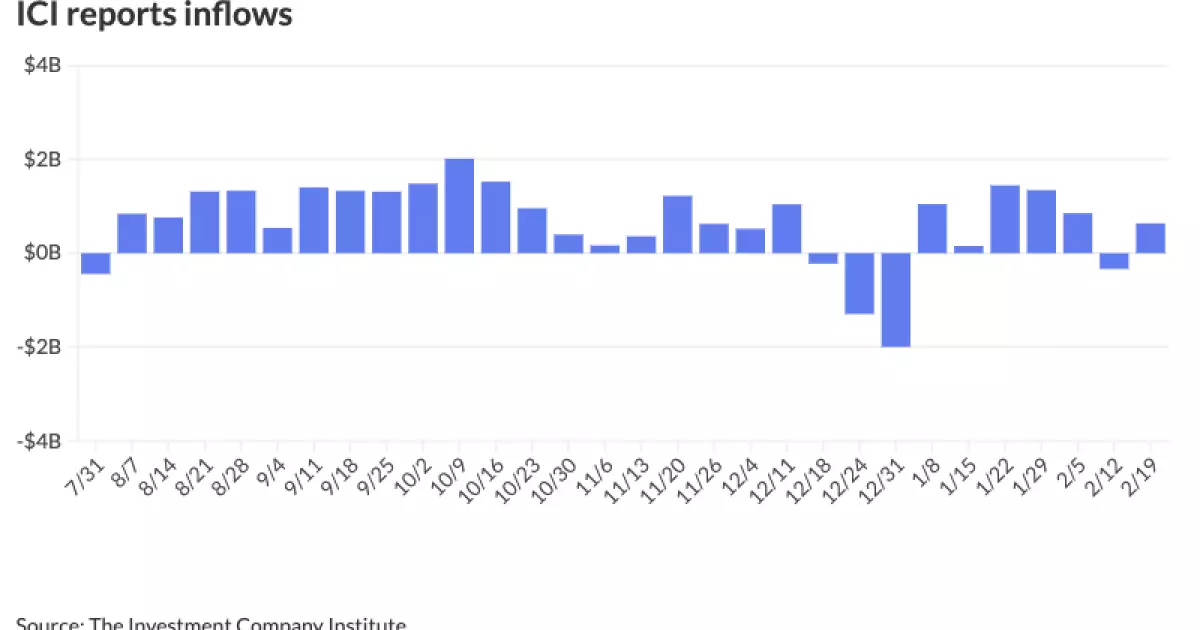The municipal bond market has recently exhibited signs of stability amidst shifting economic indicators. On a notable Wednesday, the landscape stood slightly firmer, as municipal bonds gained traction and U.S. Treasury yields continued their descent. This trend reflects a complex interplay between municipal issuance, investor sentiment, and broader economic factors. The movement in the municipal to UST yield ratios indicates varying confidence levels across different maturities, with ratios hovering at 63% for two-year bonds, 64% for five-year, 68% for ten-year, and a relatively robust 87% for thirty-year bonds. These figures suggest a growing appetite for long-term investments in a historically constrained environment.
The Investment Company Institute recently reported inflows into municipal funds, totaling $635 million for a week ending February 19. This followed a previous week characterized by $336 million in outflows, highlighting the ebbs and flows of investor sentiment in this market. Moreover, the surge in demand for exchange-traded funds (ETFs), which attracted $782 million during the same period, underlines a notable shift toward liquidity and flexibility among investors. This demand could be a strategic move by investors to navigate potential uncertainties surrounding tax policies while also taking advantage of competitive yields amidst a heavy issuance environment.
The onset of this year has marked a “heavy start” in terms of issuance within the municipal bond sector, driven primarily by an urgent need to fund infrastructure projects and a cautious reaction to the potential dismantling of tax exemptions. Analysts like Jeff Devine from GW&K point to inflation as a crucial factor exacerbating construction costs, pushing municipalities to expedite project funding. The recent influx of mega deals, such as the $1 billion issuance from the South Carolina Public Service Authority, underscores the pressing nature of funding initiatives while providing issuers with a buffer to preempt any adverse changes to the tax landscape.
Conversely, the month of February is shaping up to present a more balanced supply-demand dynamic, according to Jeff Timlin of Sage Advisory. However, the anticipated drop-off in coupon and maturity activity in March and April could shift the market balance once again. These fluctuations may necessitate agile strategies from investors as they seek to optimize returns during these transitional times.
One of the most pressing concerns in the municipal bond market pertains to the ongoing discourse surrounding the potential elimination of the tax exemption on municipal bonds. This issue remains a hotbed of political contention, with different stakeholders presenting diverse viewpoints. Timlin aptly summarizes the dilemma by questioning the net benefits versus the costs associated with the exemption’s removal. The elimination could lead to heightened borrowing costs for municipalities, ultimately forcing them to seek revenue increases that may adversely affect local consumption and tax rates.
Despite the ongoing dialogue, Devine expresses a cautious optimism regarding the likelihood of outright removal of the tax exemption. Historical patterns suggest that while lawmakers have made adjustments, an outright abolition has never come to fruition. This continuity reflects a broader consensus on the value that tax-exempt bonds deliver to the financial ecosystem, particularly in supporting infrastructure and local projects.
In the primary market, several notable issuances highlight the ongoing activity in the municipal sector. For instance, the New York City Municipal Water Finance Authority recently priced a substantial $950 million in water and sewer revenue bonds, indicative of the sustained need for investment in public utilities. The interest rates offered during this issuance range from a competitive 2.62% for shorter maturities to 4.19% for longer terms, reflective of current market conditions. Similarly, Auburn University has successfully priced $346 million in general fee revenue bonds, showcasing the ongoing demand in the education sector. These transactions not only illustrate the robust demand for municipal financing but also signal continued confidence among institutional investors.
As the municipal bond market navigates this intricate landscape marked by fluctuating Treasury yields and political discussions surrounding tax exemptions, investors must remain vigilant. Understanding the forces at play—ranging from inflation pressures to infrastructure needs—will be crucial for strategizing future investments. While the road ahead may be fraught with uncertainties, the underlying demand for municipal financing and the resilience demonstrated by market participants present a hopeful outlook for the sector. As always, a proactive approach informed by economic indicators and policy developments will be essential for successful navigation in this evolving market.

